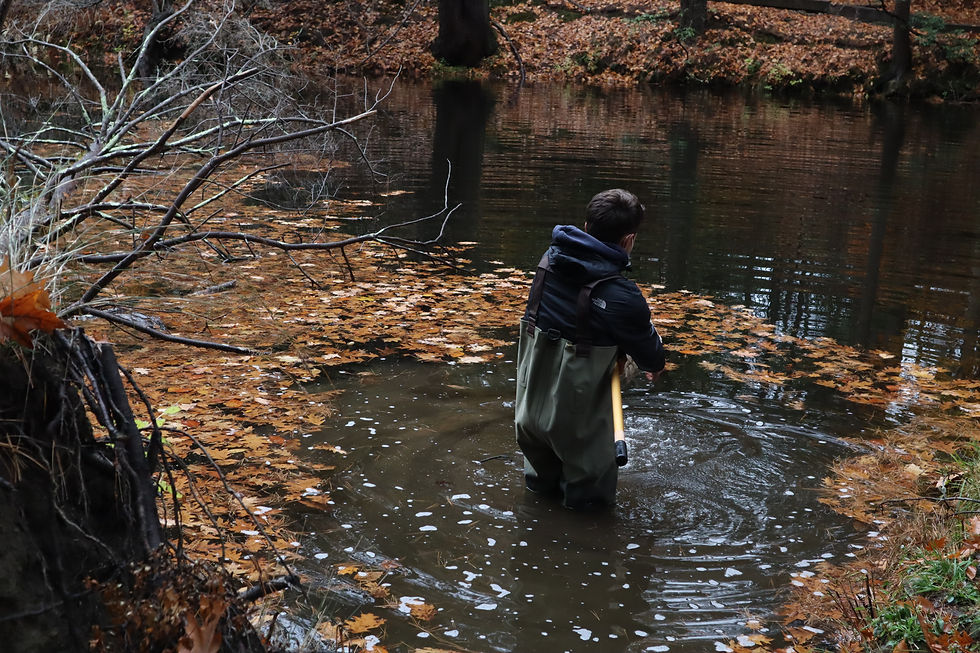End of Fall Updates
- Deborah Orieta

- Dec 3, 2020
- 4 min read
Hello GOMI community! We hope your Thanksgiving celebrations were merry and restful despite the circumstances we find ourselves in as a global community. As we near the end of the year, and after a week of reflection, we want to take some time to update everyone on the goings-on of this fall semester.
If you read our summer post, you might remember that we spent most of the summer meeting with teachers and coming up with plans to help them adapt community-based stewardship to distanced learning. We had to change our basic mode of operating, and move our community building to the web, making use of social media channels like Twitter, Instagram, and Facebook, and revamping our blog to reflect the projects at each school site. All along, we kept sight on our mission: to prepare the coming generation to steward wisely by engaging with the scientific community, driving home the importance of biodiversity, focusing on the significance of community-based action and empowering students to be agents of change. I’m not going to sugar-coat it. Our mission seemed daunting when faced with social distancing. We kept coming back to the questions of how to enable students to feel connected to their community and to each other when they were no longer allowed to do in-person work. However, as the semester developed, we focused on lifting up the things that were working well and used the challenges that arose as opportunities to pivot into something more useful.

The teachers and students really gave a herculean effort. They took each week as it came, often shifting from in-person to online or hybrid classes as the need arose. Despite administrative hurdles, they all got their students outside. At North Shore Montessori School, the students created sanctuary gardens on school grounds, while students at Lowell Middlesex Academy Charter School cared for their own windowsill crops, and learned about biodiversity within their cityscape. The students in River Valley Charter School spent the semester at the Parker River Wildlife Refuge, learning how the ecosystem worked and how to ask questions of it. They caught mummichogs, measured invasive phragmites (wetland reeds), and even went cranberry picking in a natural cranberry bog. In Newburyport, high school students got to use high-end technology and more traditional methods to study and compare different water parameters, while students in Kennebunk returned to the beach month after month to carry out beach profiling.

All these achievements add up to a semi-solid foundation. They prove to us that even if the next couple of months are just as challenging as the preceding ones, we are resilient and adaptable in our work, and we can rally. We have an idea now of what our base-level operating is during this time and can start to build up our work with more impetus for next semester. Just as the summer gave us lots of energy to look around and get our hands in the soil, now the end of fall provides us with some time to regroup. At GOMI, we are using this time to work with the teachers to deploy a GOMI-wide mapping project. We will use GIS mapping technology to connect the students across sites, so they can see how their own environments and observations relate to those of their peers. Key to the mapping will be getting students to articulate why their environment of study matters. They will have to become storytellers and advocates. This work will be underpinned by a series of mini zoom conferences, leading up to a bigger, end of semester Open-House type event. Here, students will get to present the work they’ve been doing to address climate change and environmental issues in their communities.
This focus on connecting students across sites is crucial if we want to fulfill our mission. It is important that students see themselves as a collective rather than as individuals faced with an insurmountable problem. This connection is also crucial to get at the root of community-based stewardship. Stewardship, according to Merriam-Webster, “refers to the careful and responsible management of something entrusted to one’s care.” If we are talking about community-based stewardship, then, knowing and building the community itself is paramount. Moreover, we hope that through the series of conferences, opportunities for connection and storytelling, students will develop a richer understanding of how their values and democratic skills can combine with scientific inquiry to cultivate a deeper sense of belonging in our natural world.
So, as we plan for all these exciting developments, we invite you to keep an eye out for updates from us and our sites. We invite you to jump in on conversations, engage your curiosity, and find ways to participate and/or learn about movements and activities happening in your community. COVID-19 has driven home how crucial it is to take time to reflect, learn, and adapt our strategies to meet our times. Let’s take this time to do just that, so we can bounce back stronger in the months to come.





Comments